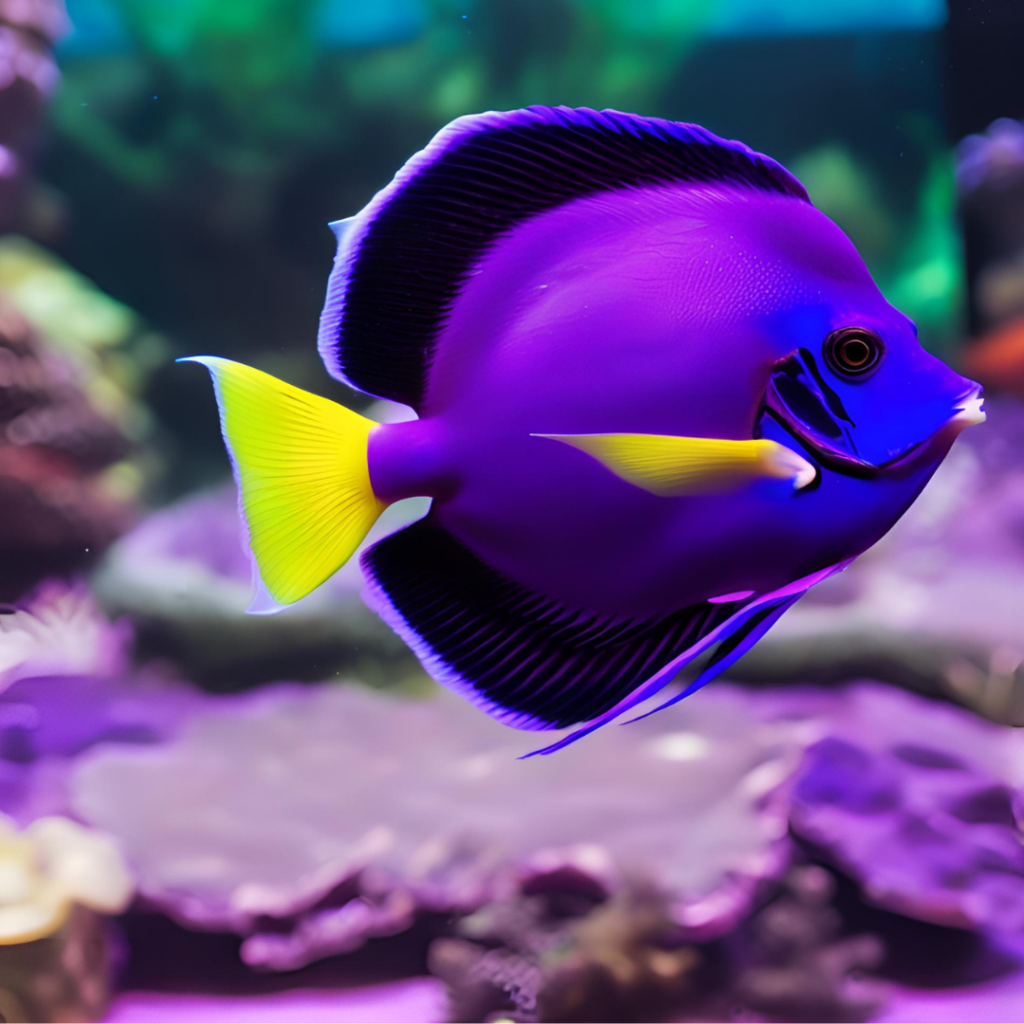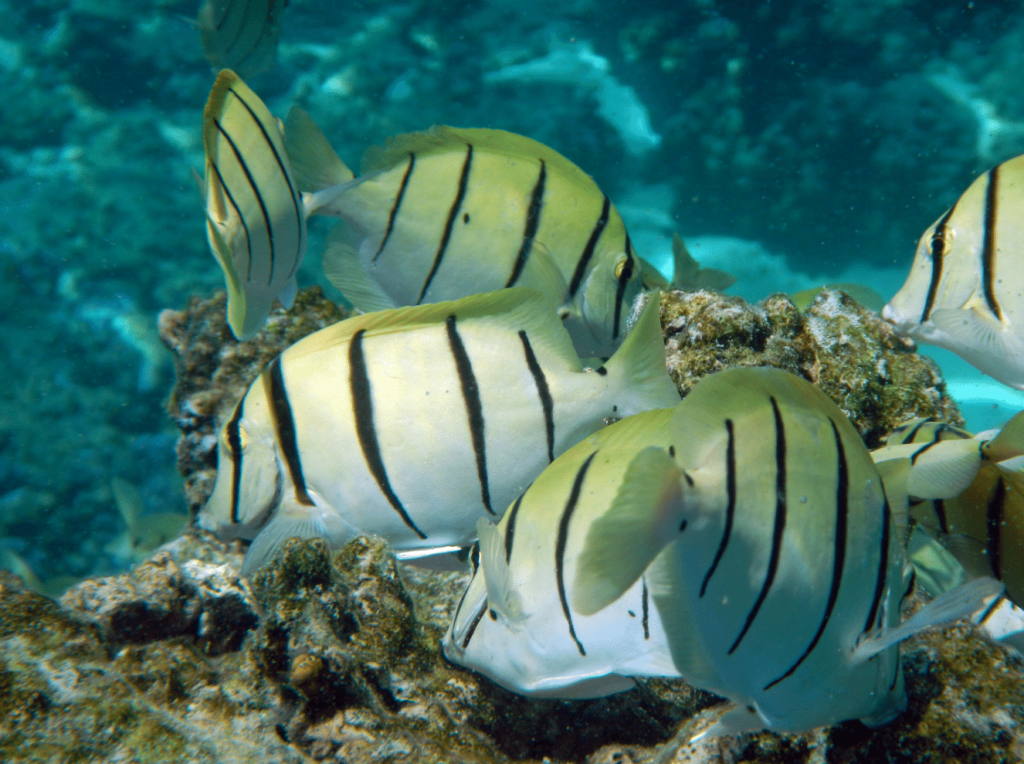Your cart is currently empty!

Sailfin Tang vs. Other Tang Species: A Comparative Guide
Are you considering adding a tang to your saltwater aquarium but feeling overwhelmed by the variety of options? Understanding the differences between tang species can make all the difference in choosing the right one for your tank. This guide delves into the world of tangs, focusing mainly on the Sailfin Tang and how it compares to other popular species. Each tang brings charm and challenges, from its vibrant colors to its unique behaviors.
Whether you’re a seasoned aquarist or just starting, this comparative guide will help you make the right choices and ensure a thriving aquatic environment for your marine companions.
Comparison Table
| Aspect | Sailfin Tang (Zebrasoma veliferum) | Yellow Tang (Zebrasoma flavescens) | Purple Tang (Zebrasoma xanthurum) | Convict Tang (Acanthurus triostegus) |
| Appearance | Dark brown body with bright yellow and white stripes; elongated dorsal and anal fins like sails | Bright yellow, oval-shaped body | Deep purple color with a vivid yellow tail | Vertical black stripes on a white/grey body resembling a prison uniform |
| Size | Up to 15 inches in the wild, 12 inches in captivity | Up to 8 inches | Up to 9 inches | Up to 8 inches |
| Tank Size | Minimum 125 gallons | Minimum 100 gallons | Minimum 100 gallons | Minimum 125 gallons |
| Habitat | Coral-rich areas of reefs and lagoons | Requires plenty of swimming space and live rock | Needs a balance of open swimming space and live rock | Needs ample space because of active swimming |
| Diet | Herbivorous, primarily algae; requires vegetable-based foods | Herbivorous, diet rich in marine algae | Herbivorous grazes on filamentous algae; needs nori and seaweed | Herbivorous, primarily algae; requires marine-based algae and seaweed |
| Suitable Tank Mates | Peaceful fish that won’t challenge their territory | Best kept singly unless introduced simultaneously in a large tank | Best kept singly unless in a vast tank | Good choice for community tanks due to peaceful nature |
| Care Level | Moderate, require stable water conditions | Moderate, relatively hardy | Moderate, needs a large tank to reduce stress | Moderate, relatively easy to keep in groups if space allows |
Sailfin Tang (Zebrasoma veliferum)
Appearance
The Sailfin Tang is easily recognized by its dramatic appearance. It features a dark brown body adorned with bright yellow and white stripes. The most distinctive aspect of its appearance is the elongated dorsal and anal fins, which expand like sails when the fish feels threatened or excited. These fins are typically covered with the same striking stripes that cover the body, enhancing its visual appeal.
Size
In the wild, Sailfin Tangs can grow up to 15 inches, but in captivity, they typically reach around 12 inches. Their size makes them a significant aquarium presence, requiring ample space to thrive.
Temperament
Sailfin Tangs are semi-aggressive, particularly towards other tangs. They establish territories and can become combative if their space is encroached upon. Monitoring their behavior is essential, especially in tanks with multiple tangs or large territorial fish.
Habitat
Native to the Indian Ocean and South Pacific, Sailfin Tangs inhabit coral-rich areas of reefs and lagoons. In captivity, they require a tank with plenty of hiding spots, live rock for grazing, and open swimming areas. A tank size of 125 gallons is recommended to accommodate their active lifestyle.
Diet
Primarily herbivorous, Sailfin Tangs feed on algae. In an aquarium, their diet should include a variety of vegetable-based foods, such as spirulina, seaweed, and high-quality flake foods designed for herbivores. Regular feeding of marine algae or seaweed is crucial for their health and coloration.
Suitable Tank Mates
Sailfin Tangs do well with peaceful fish that won’t challenge their territory. Ideal tank mates include gobies, blennies, and reef-safe invertebrates like cleaner shrimp. Avoid housing them with other tangs to prevent territorial disputes unless the tank is huge.
Care Level
Moderate. While not the most challenging species to care for, Sailfin Tangs require stable water conditions and a well-maintained environment. They are best suited for aquarists with some experience keeping saltwater fish.
Yellow Tang (Zebrasoma flavescens)
- Appearance and Size: The Yellow Tang is easily recognizable by its bright yellow, oval-shaped body. They grow to about 8 inches, making them smaller than Sailfin Tangs.
- Tank Requirements: A minimum of 100 gallons is recommended for Yellow Tangs. They need plenty of swimming space and live rock for grazing.
- Diet: Like Sailfin Tangs, Yellow Tangs are herbivorous and require a diet rich in marine algae. It is essential to feed them dried seaweed and algae-based foods at least three times a week.
- Behavior: Yellow Tangs are relatively hardy and peaceful but can exhibit territorial aggression, especially towards other tangs. It is best to keep just one Yellow Tang unless introduced simultaneously in a large tank .

Purple Tang (Zebrasoma xanthurum)
- Appearance and Size: Purple Tangs are striking with their deep purple color and vivid yellow tail. They typically reach about 9 inches in length.
- Tank Requirements: Purple Tangs require a minimum of 100 gallons but will benefit from larger tanks to reduce stress and aggression. They need a balance of open swimming space and structures like live rock for hiding and grazing.
- Diet: Purple Tangs are herbivores that graze on filamentous algae. Supplementing their diet with nori and other seaweed is crucial to maintain their health and vibrant color.
- Behavior: These tangs can be semi-aggressive, especially in smaller tanks. They are reef-safe and often found in groups in the wild, but in captivity, they should be kept singly unless the tank is huge.

Convict Tang (Acanthurus triostegus)
- Appearance and Size: Convict Tangs have a distinctive pattern of vertical black stripes on a white or grey body, resembling a prison uniform. They grow to about 8 inches.
- Tank Requirements: A minimum of 125 gallons is recommended for Convict Tangs. They are active swimmers and need ample space to move around.
- Diet: As herbivores, Convict Tangs feed on algae. It is essential to provide them with plenty of marine-based algae and seaweed.
- Behavior: Convict Tangs are relatively peaceful and can be kept in groups if the tank is large enough. They are less aggressive than other tang species, making them a good choice for community tanks.
Considering Adding a Tang to Your Saltwater Aquarium? Explore More at Boca Aquarium
Choosing the suitable tang species for your saltwater aquarium hinges on understanding their unique traits and requirements. Each tang, whether the striking Sailfin Tang with its elongated fins or the vibrant Purple Tang adorned in deep purple hues, brings charm and challenges to the tank.
Each aspect is crucial in creating a thriving aquatic environment, from their dietary needs to compatibility with other fish.
Are you fascinated by the diversity of tang species but unsure which one suits your aquarium best?
Whether you’re drawn to the majestic Sailfin Tang or curious about other species, Boca Aquarium offers an immersive experience to see these stunning fish up close. You can discover their vibrant colors, unique behaviors, and habitat needs firsthand.
Our exhibits showcase their beauty and provide valuable insights into creating a thriving saltwater environment. Join us at Boca Aquarium and embark on your journey to becoming a knowledgeable and successful tang owner.
